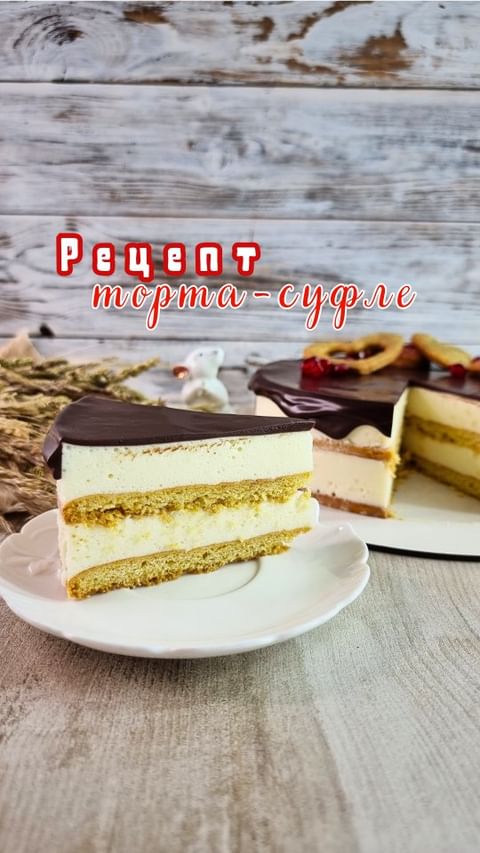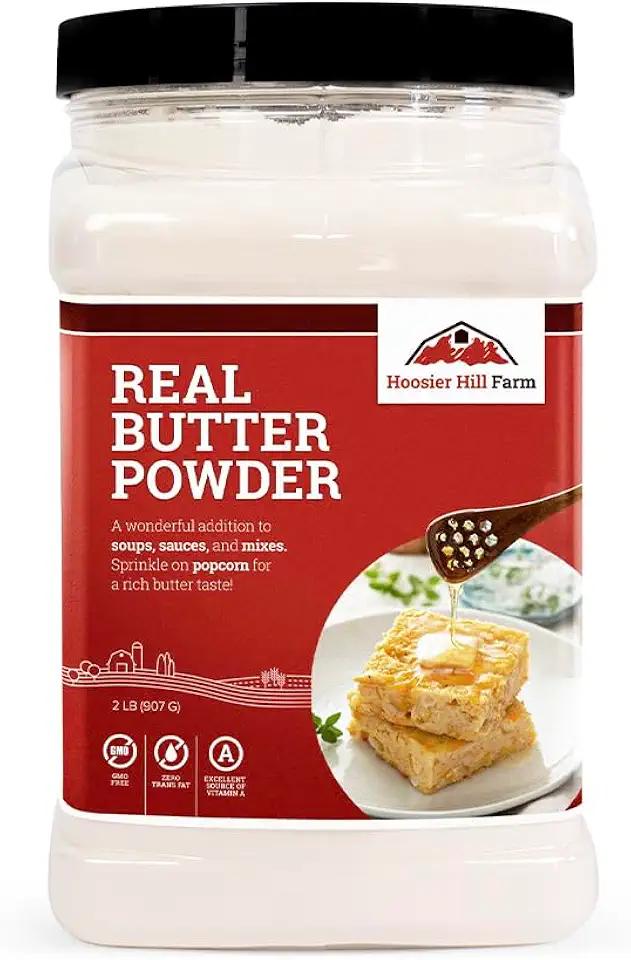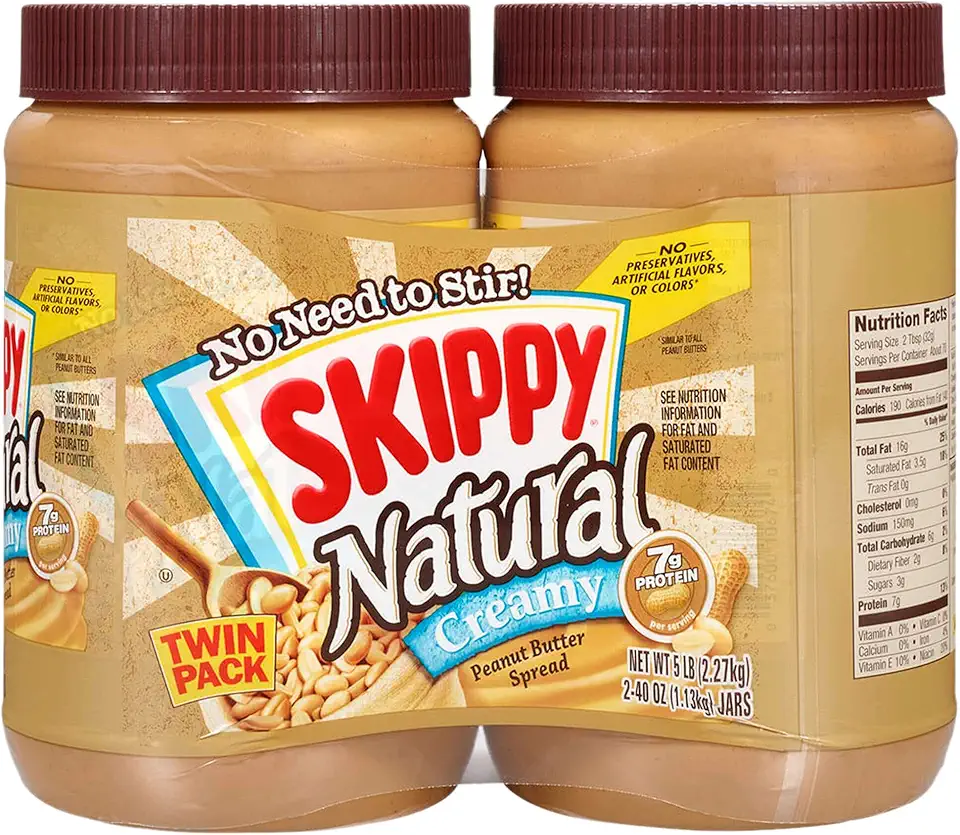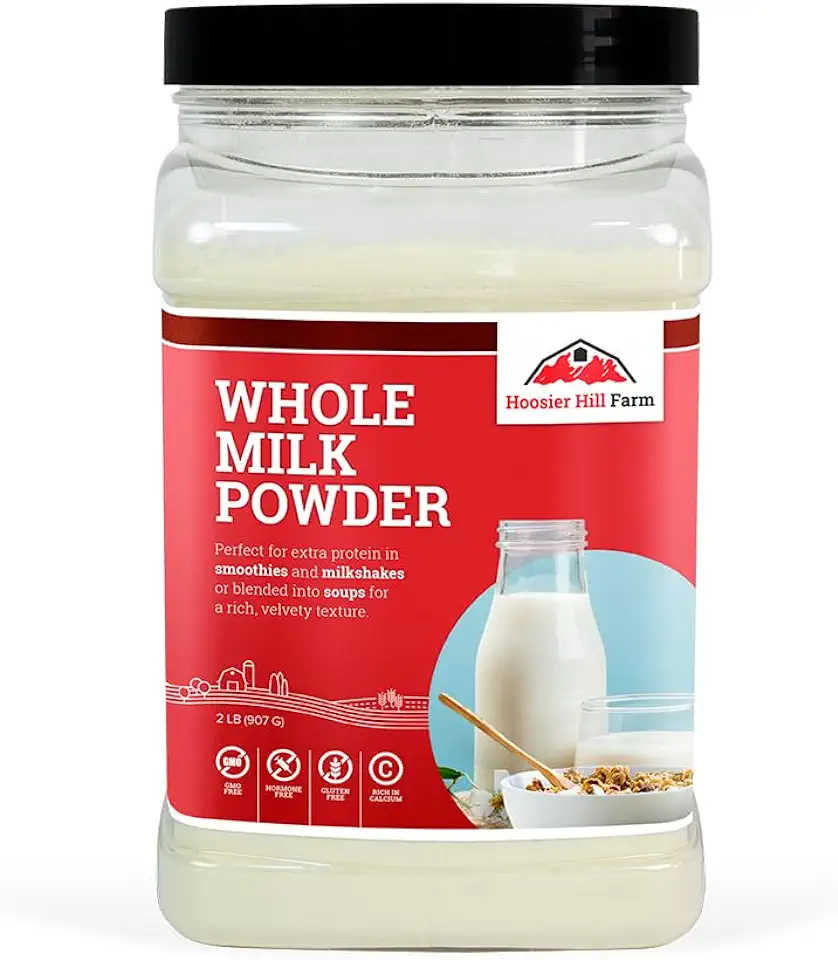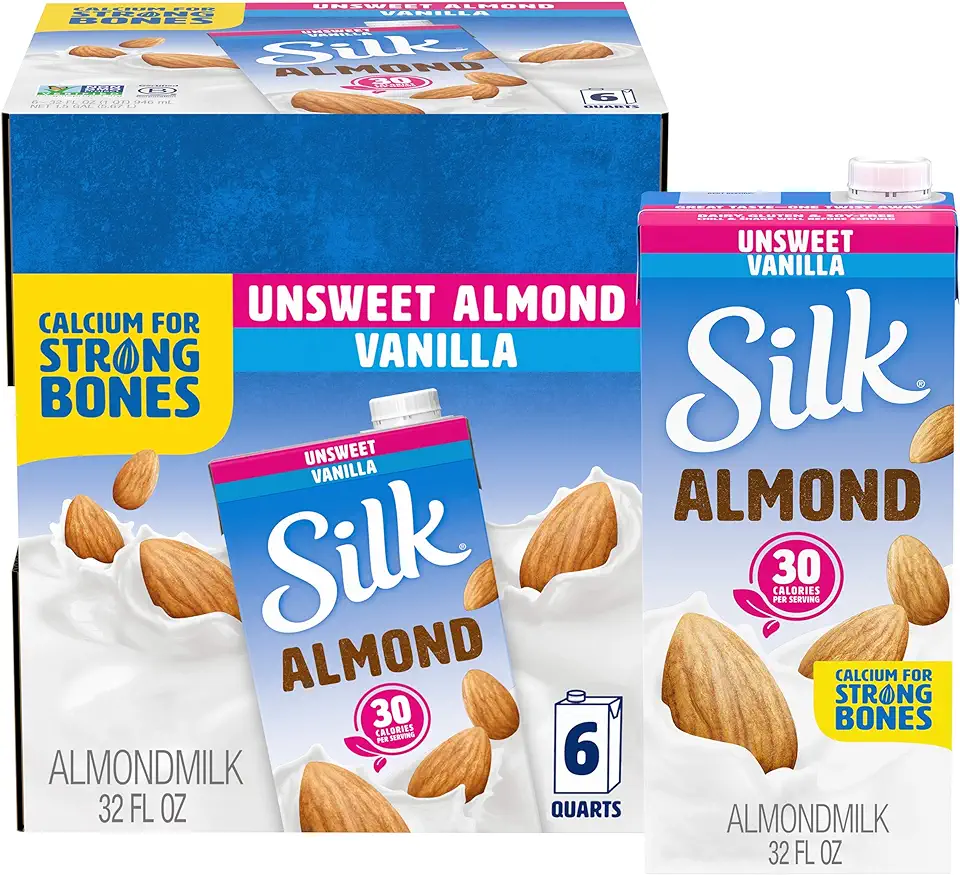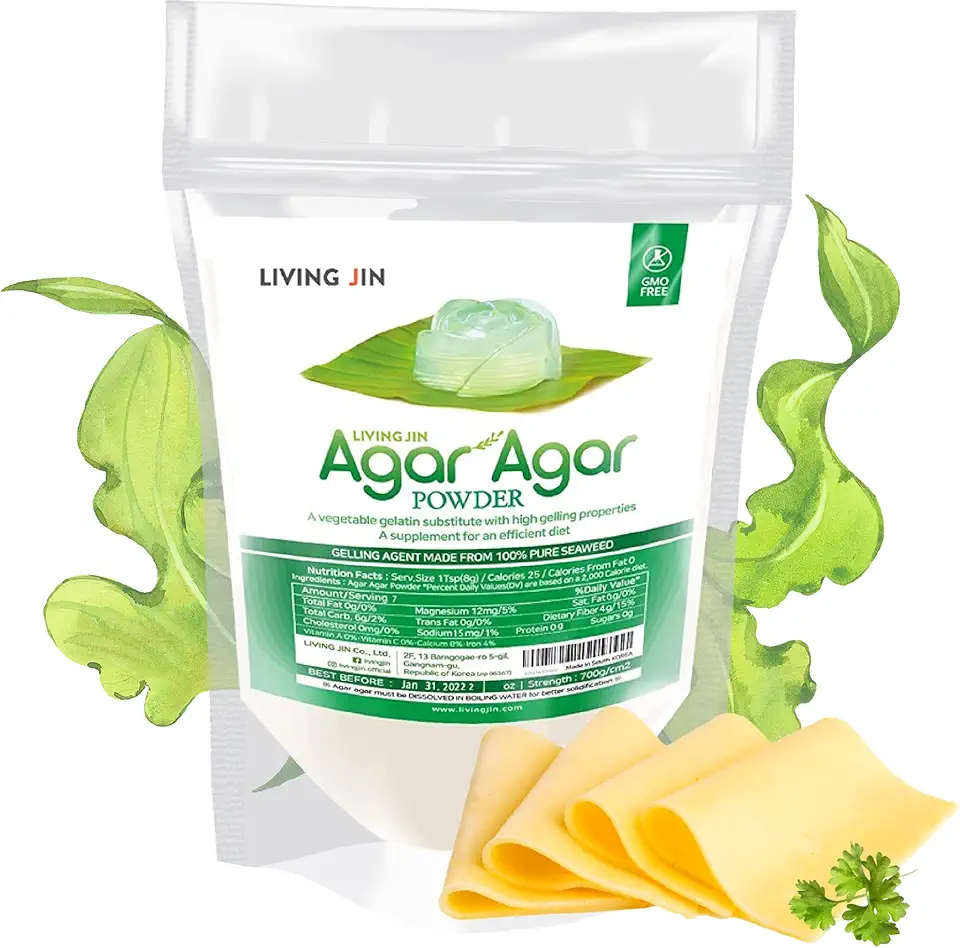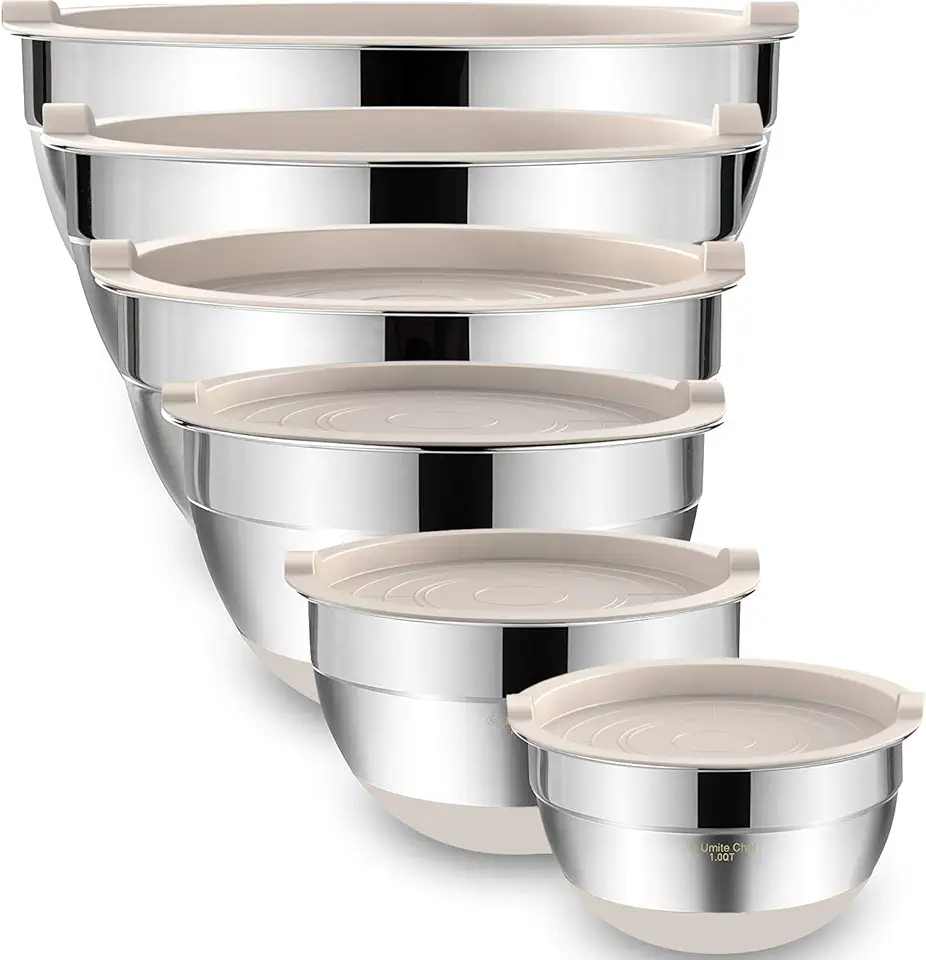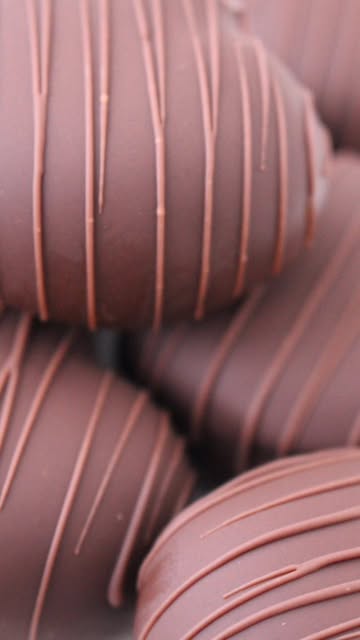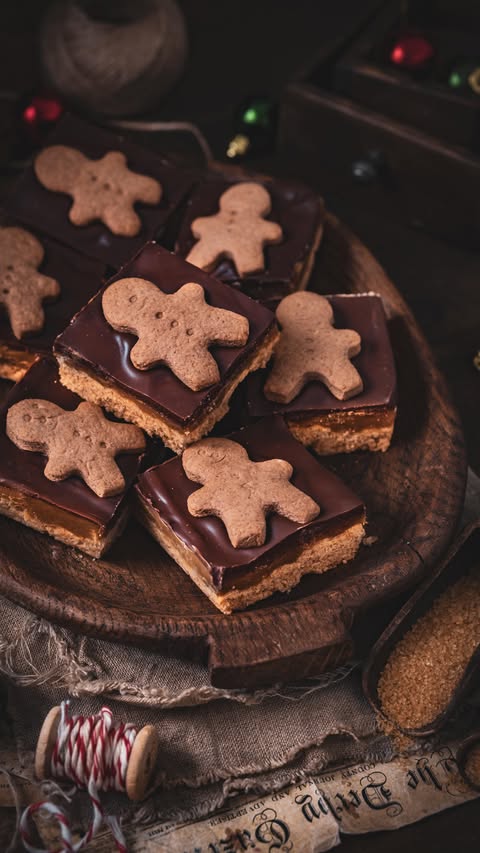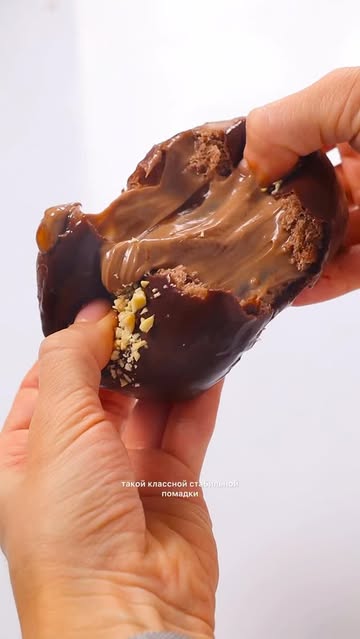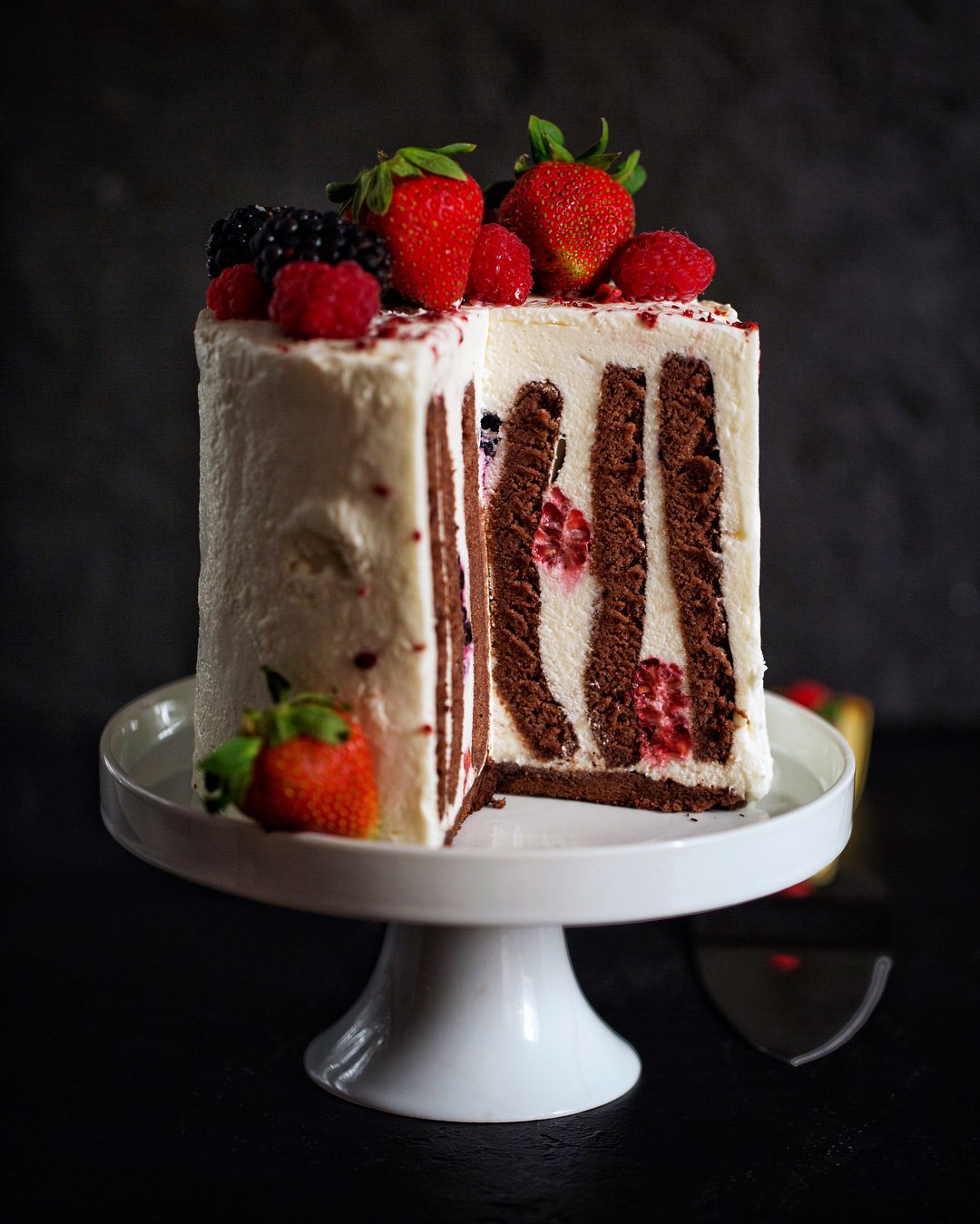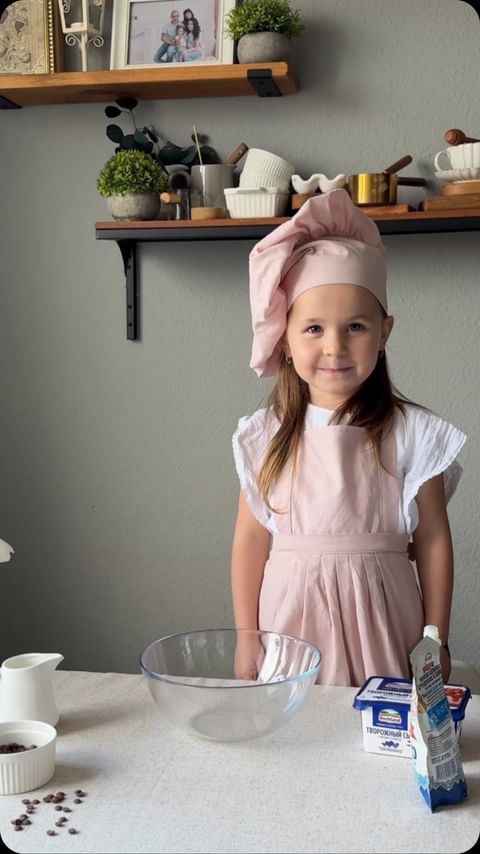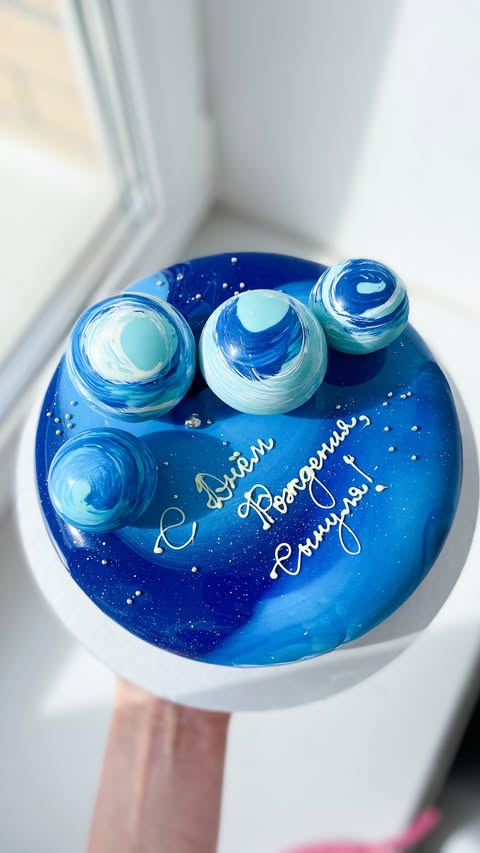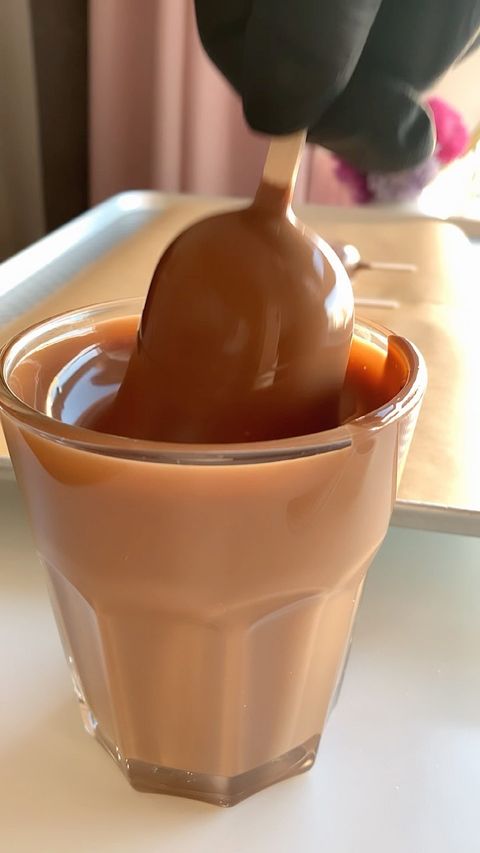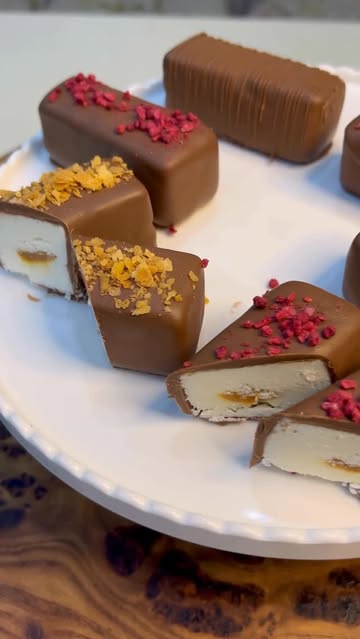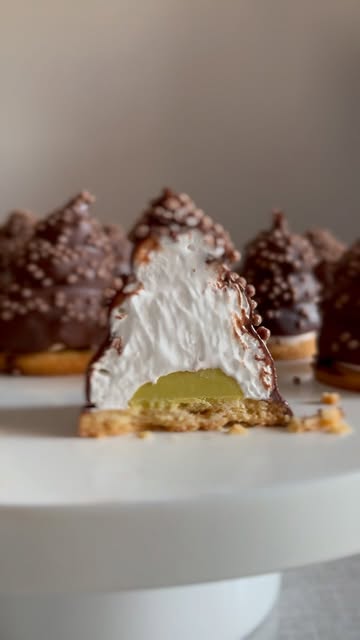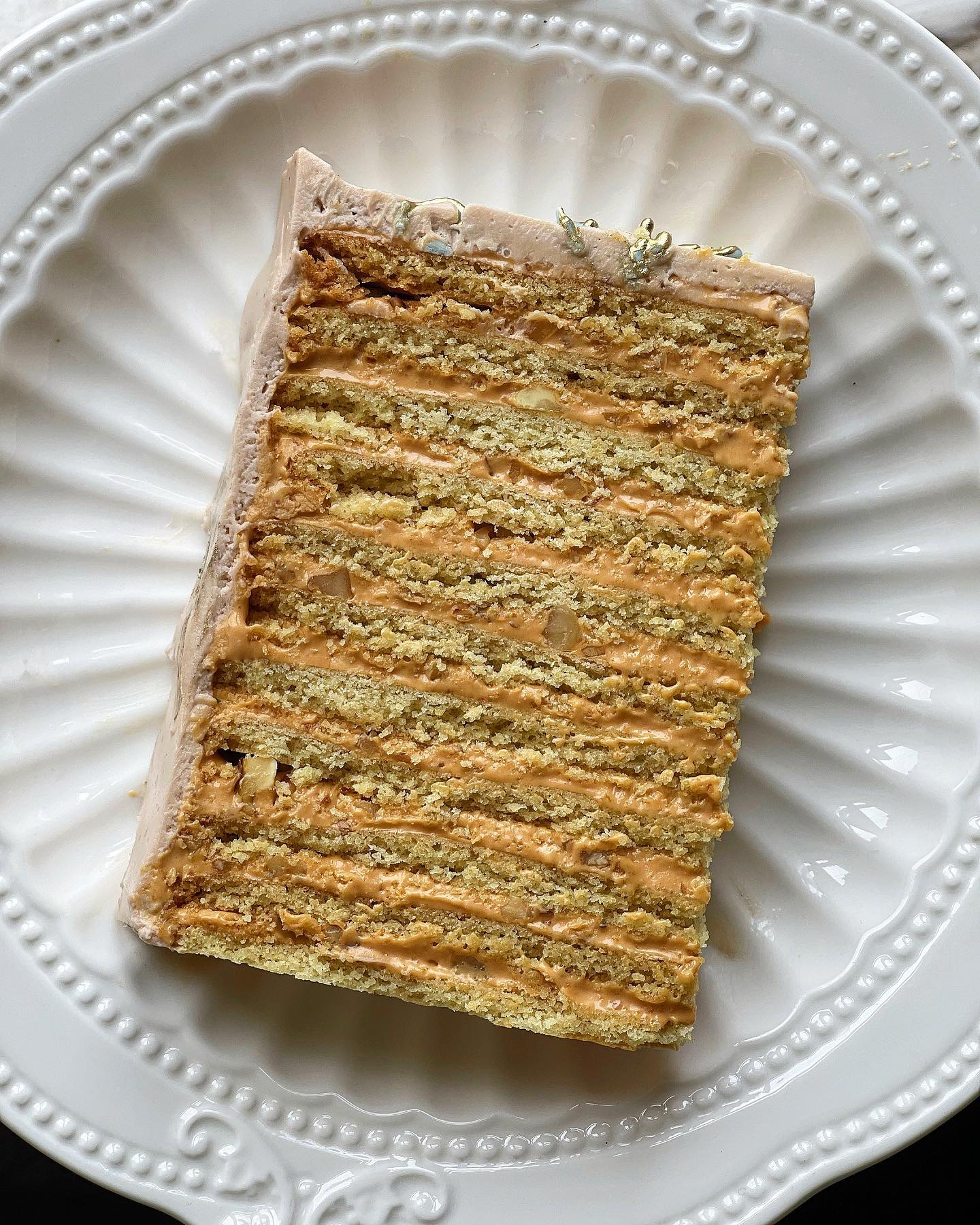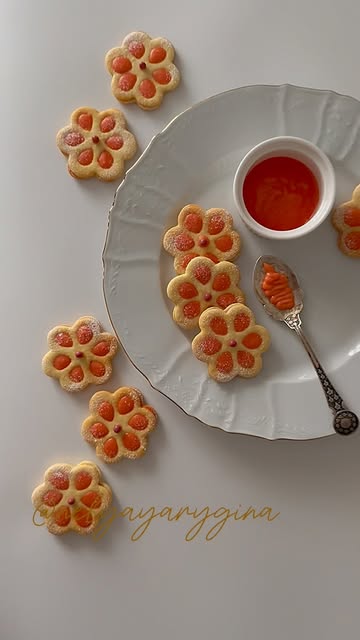Ingredients
Shortbread Layers
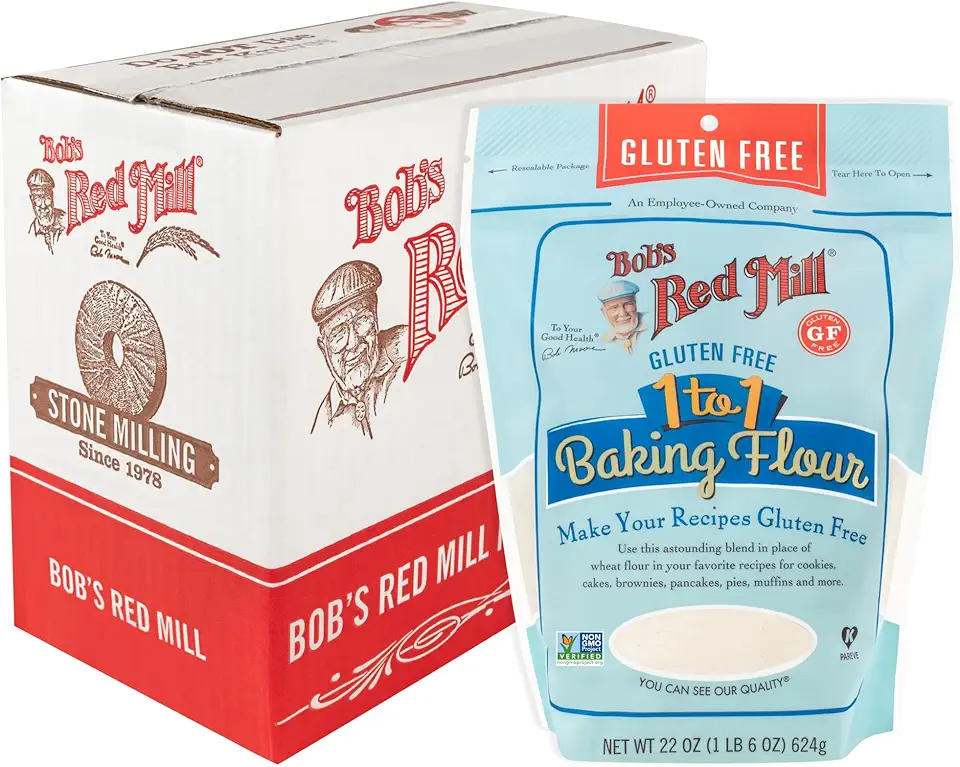 Bob's Red Mill Gluten Free 1-to-1 Baking Flour, 22 Ounce (Pack of 4)
$23.96
View details
Prime
Bob's Red Mill Gluten Free 1-to-1 Baking Flour, 22 Ounce (Pack of 4)
$23.96
View details
Prime
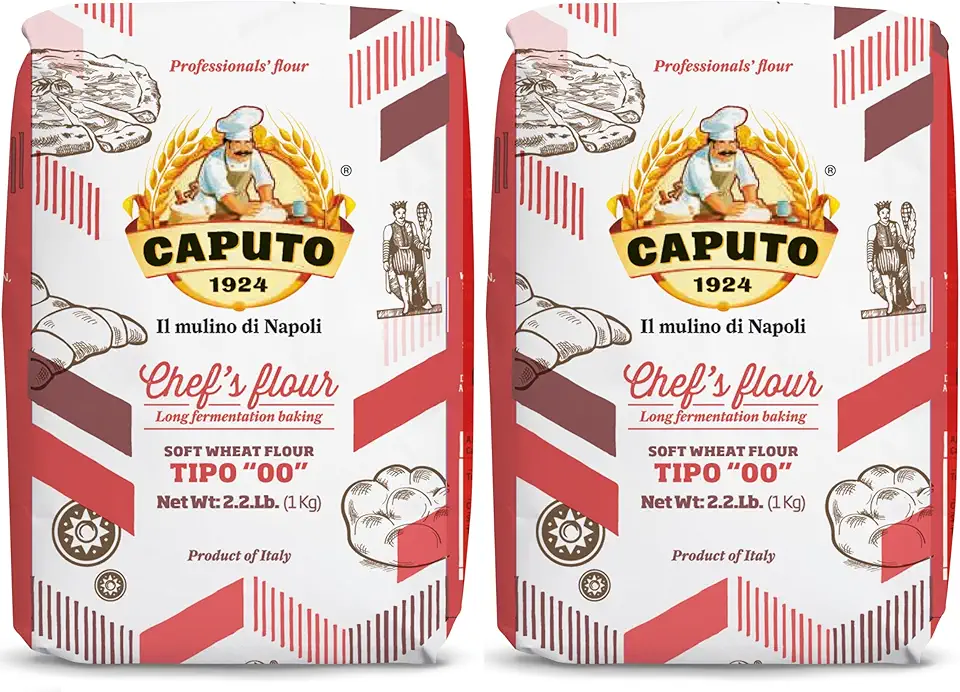 Antimo Caputo Chefs Flour - Italian Double Zero 00 - Soft Wheat for Pizza Dough, Bread, & Pasta, 2.2 Lb (Pack of 2)
$16.99
View details
Prime
best seller
Antimo Caputo Chefs Flour - Italian Double Zero 00 - Soft Wheat for Pizza Dough, Bread, & Pasta, 2.2 Lb (Pack of 2)
$16.99
View details
Prime
best seller
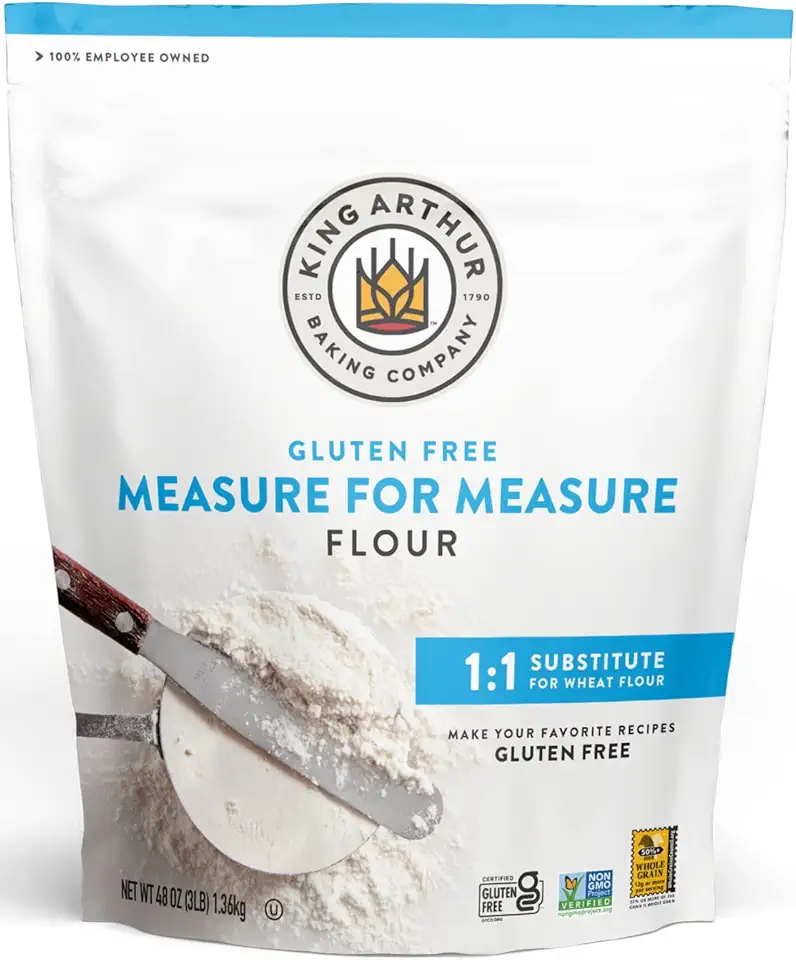 King Arthur, Measure for Measure Flour, Certified Gluten-Free, Non-GMO Project Verified, Certified Kosher, 3 Pounds, Packaging May Vary
$8.62
View details
King Arthur, Measure for Measure Flour, Certified Gluten-Free, Non-GMO Project Verified, Certified Kosher, 3 Pounds, Packaging May Vary
$8.62
View details
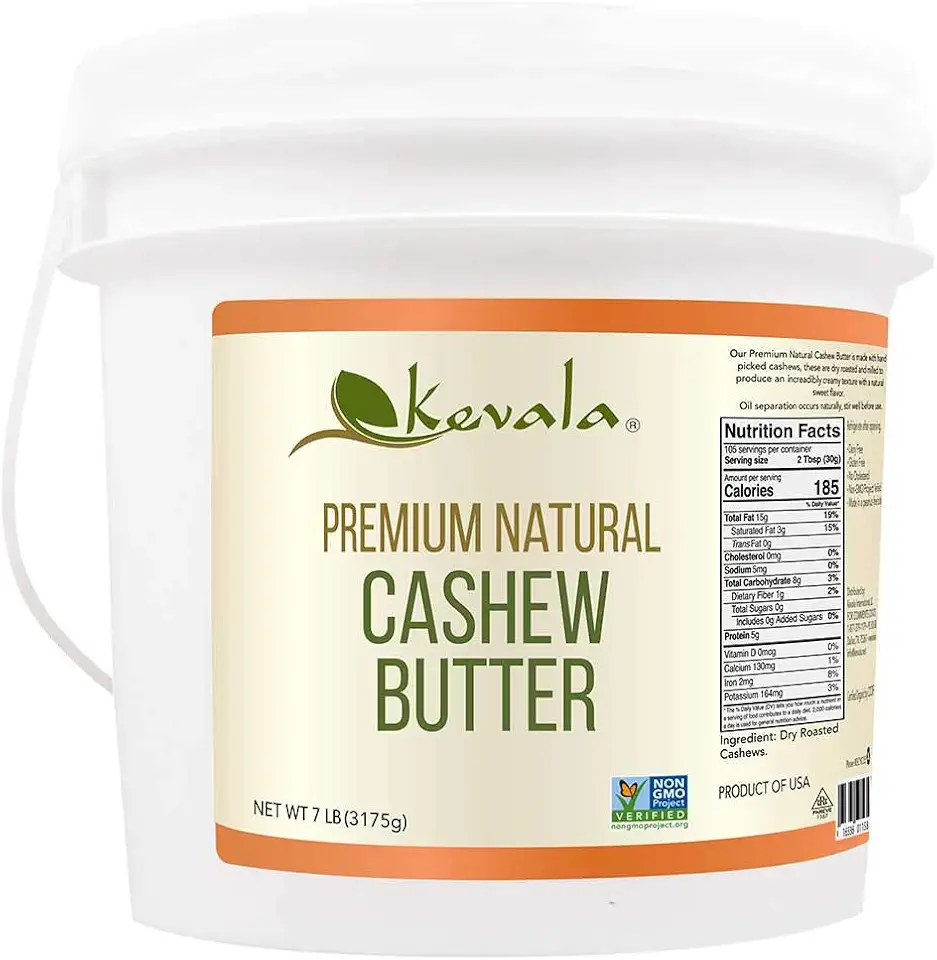 Kevala Cashew Butter 7 Lbs Pail
$83.62
View details
Prime
best seller
Kevala Cashew Butter 7 Lbs Pail
$83.62
View details
Prime
best seller
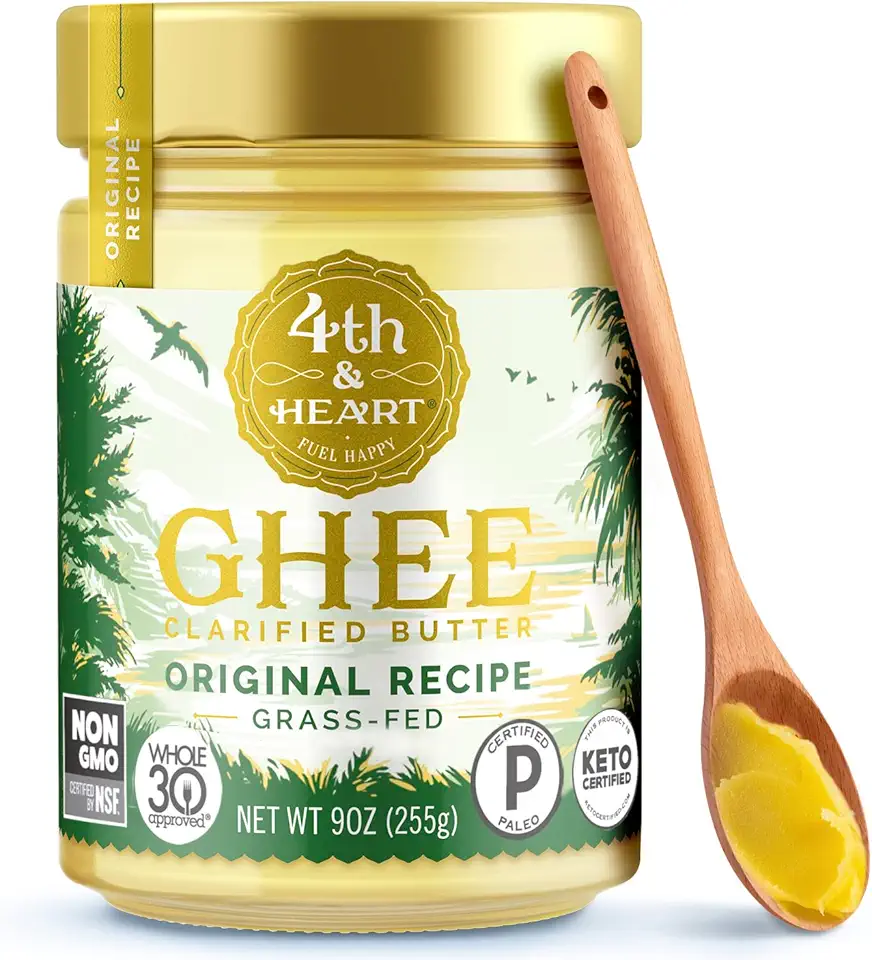 4th & Heart Original Grass-Fed Ghee, Clarified Butter, Keto, Pasture Raised, Lactose and Casein Free, Certified Paleo (9 Ounces)
$11.49
View details
Prime
4th & Heart Original Grass-Fed Ghee, Clarified Butter, Keto, Pasture Raised, Lactose and Casein Free, Certified Paleo (9 Ounces)
$11.49
View details
Prime
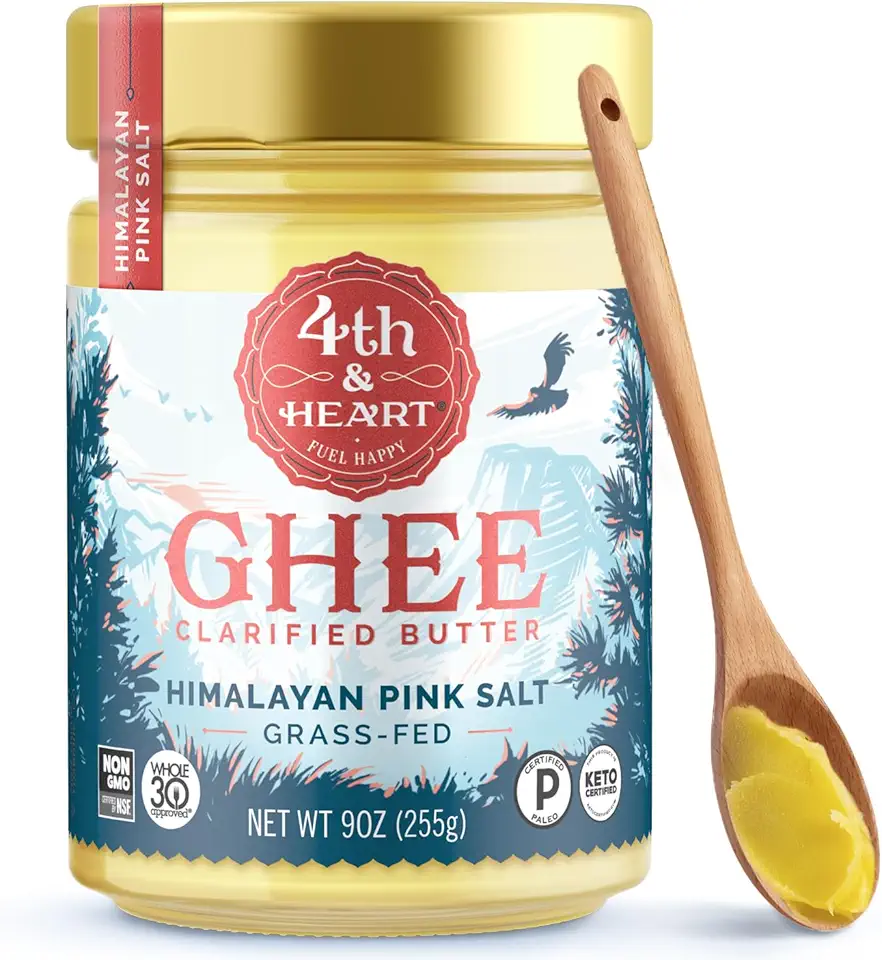 4th & Heart Himalayan Pink Salt Grass-Fed Ghee, Clarified Butter, Keto Pasture Raised, Non-GMO, Lactose and Casein Free, Certified Paleo (9 Ounces)
$9.49
View details
4th & Heart Himalayan Pink Salt Grass-Fed Ghee, Clarified Butter, Keto Pasture Raised, Non-GMO, Lactose and Casein Free, Certified Paleo (9 Ounces)
$9.49
View details
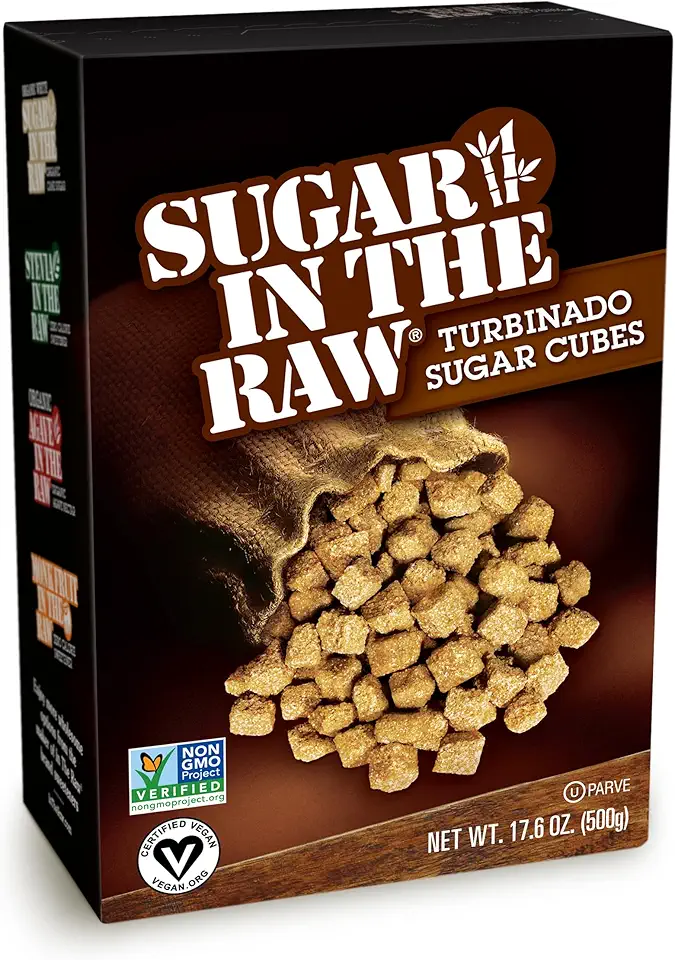 Sugar In The Raw Granulated Turbinado Cane Sugar Cubes, No Added Flavors or erythritol, Pure Natural Sweetener, Hot & Cold Drinks, Coffee, Vegan, Gluten-Free, Non-GMO,Pack of 1
$5.27
View details
Prime
Sugar In The Raw Granulated Turbinado Cane Sugar Cubes, No Added Flavors or erythritol, Pure Natural Sweetener, Hot & Cold Drinks, Coffee, Vegan, Gluten-Free, Non-GMO,Pack of 1
$5.27
View details
Prime
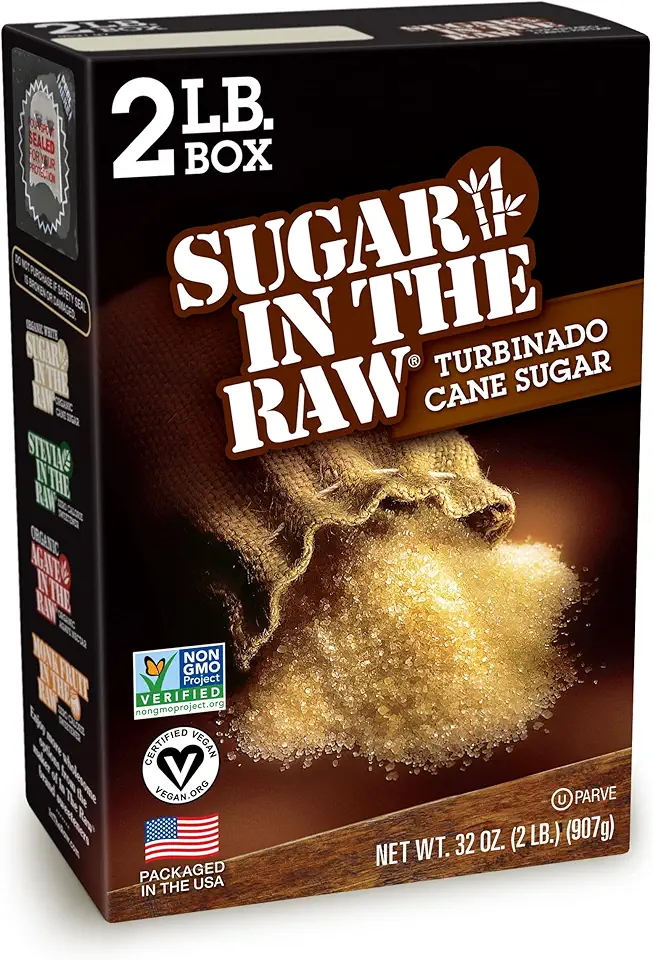 Sugar In The Raw Granulated Turbinado Cane Sugar, No Added Flavors or erythritol, Pure Natural Sweetener, Hot & Cold Drinks, Coffee, Baking, Vegan, Gluten-Free, Non-GMO, Bulk Sugar, 2lb Bag (1-Pack)
$3.74
$4.14
View details
Prime
Sugar In The Raw Granulated Turbinado Cane Sugar, No Added Flavors or erythritol, Pure Natural Sweetener, Hot & Cold Drinks, Coffee, Baking, Vegan, Gluten-Free, Non-GMO, Bulk Sugar, 2lb Bag (1-Pack)
$3.74
$4.14
View details
Prime
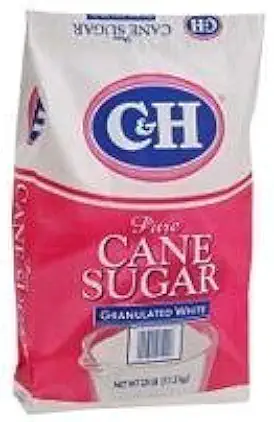 C&H Pure Cane Granulated White Sugar, 25-Pound Bags
$56.99
$49.98
View details
C&H Pure Cane Granulated White Sugar, 25-Pound Bags
$56.99
$49.98
View details
Souffle
 Sugar In The Raw Granulated Turbinado Cane Sugar Cubes, No Added Flavors or erythritol, Pure Natural Sweetener, Hot & Cold Drinks, Coffee, Vegan, Gluten-Free, Non-GMO,Pack of 1
$5.27
View details
Prime
Sugar In The Raw Granulated Turbinado Cane Sugar Cubes, No Added Flavors or erythritol, Pure Natural Sweetener, Hot & Cold Drinks, Coffee, Vegan, Gluten-Free, Non-GMO,Pack of 1
$5.27
View details
Prime
 Sugar In The Raw Granulated Turbinado Cane Sugar, No Added Flavors or erythritol, Pure Natural Sweetener, Hot & Cold Drinks, Coffee, Baking, Vegan, Gluten-Free, Non-GMO, Bulk Sugar, 2lb Bag (1-Pack)
$3.74
$4.14
View details
Prime
Sugar In The Raw Granulated Turbinado Cane Sugar, No Added Flavors or erythritol, Pure Natural Sweetener, Hot & Cold Drinks, Coffee, Baking, Vegan, Gluten-Free, Non-GMO, Bulk Sugar, 2lb Bag (1-Pack)
$3.74
$4.14
View details
Prime
 C&H Pure Cane Granulated White Sugar, 25-Pound Bags
$56.99
$49.98
View details
C&H Pure Cane Granulated White Sugar, 25-Pound Bags
$56.99
$49.98
View details
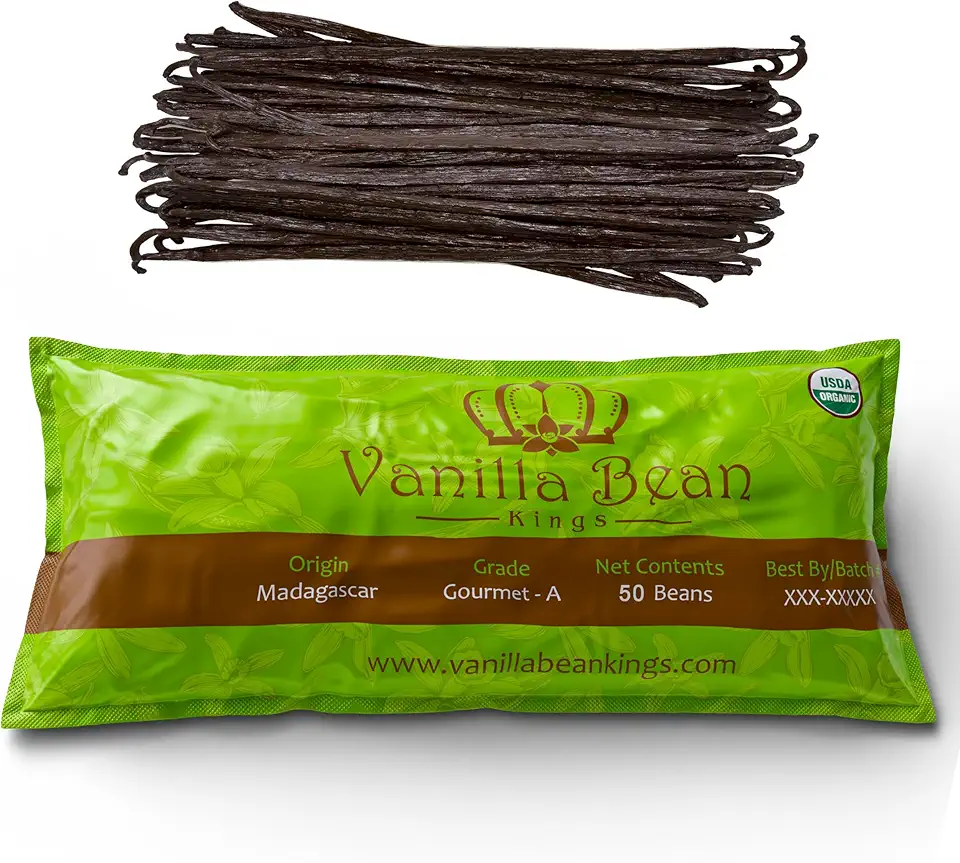 50 Organic Madagascar Vanilla Beans. Whole Grade A Vanilla Pods for Vanilla Extract and Baking
$39.99
View details
Prime
50 Organic Madagascar Vanilla Beans. Whole Grade A Vanilla Pods for Vanilla Extract and Baking
$39.99
View details
Prime
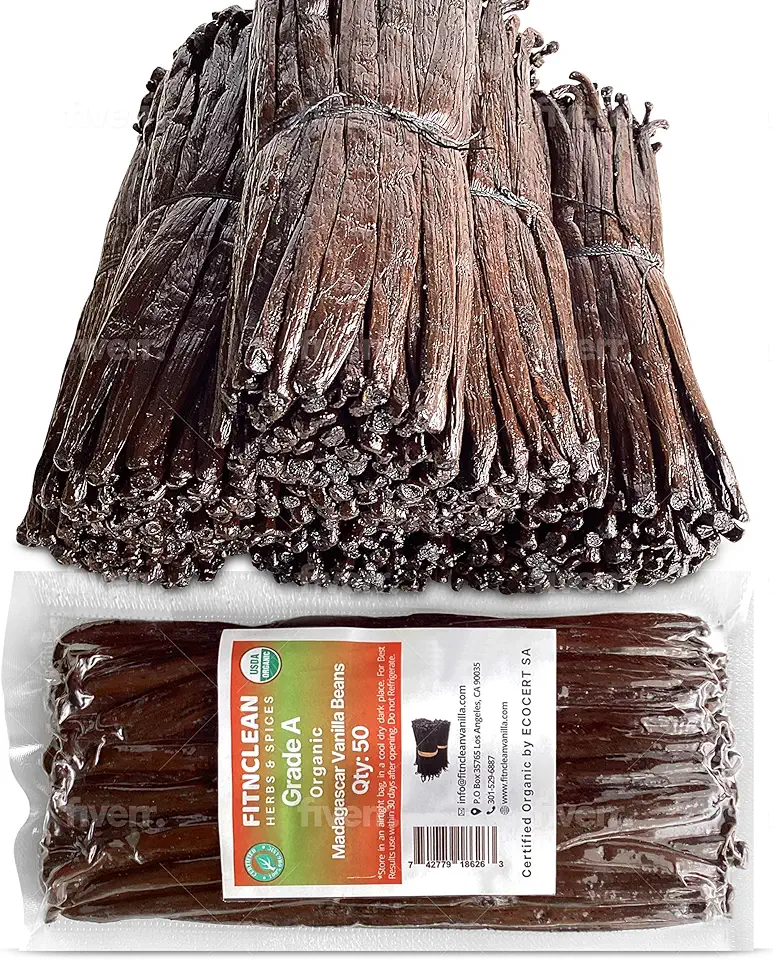 50 Organic Grade A Madagascar Vanilla Beans. Certified USDA Organic for Extract and all things Vanilla by FITNCLEAN VANILLA. ~5" Bulk Fresh Bourbon NON-GMO Pods.
$37.99
View details
Prime
50 Organic Grade A Madagascar Vanilla Beans. Certified USDA Organic for Extract and all things Vanilla by FITNCLEAN VANILLA. ~5" Bulk Fresh Bourbon NON-GMO Pods.
$37.99
View details
Prime
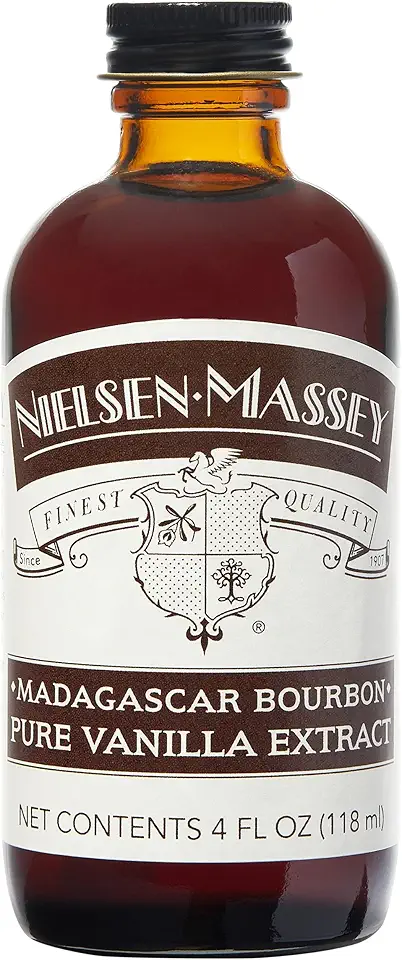 Nielsen-Massey Madagascar Bourbon Pure Vanilla Extract for Baking and Cooking, 4 Ounce Bottle
$19.95
View details
Nielsen-Massey Madagascar Bourbon Pure Vanilla Extract for Baking and Cooking, 4 Ounce Bottle
$19.95
View details
Chocolate Glaze
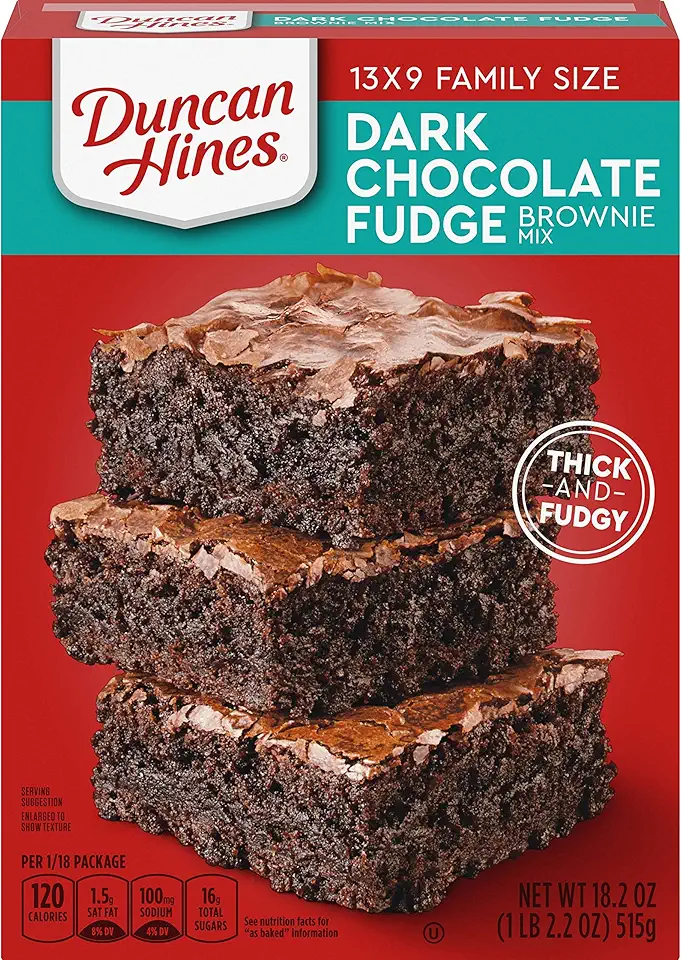 Duncan Hines Dark Chocolate Fudge Brownie Mix, 18.2 OZ
$1.54
View details
Prime
Duncan Hines Dark Chocolate Fudge Brownie Mix, 18.2 OZ
$1.54
View details
Prime
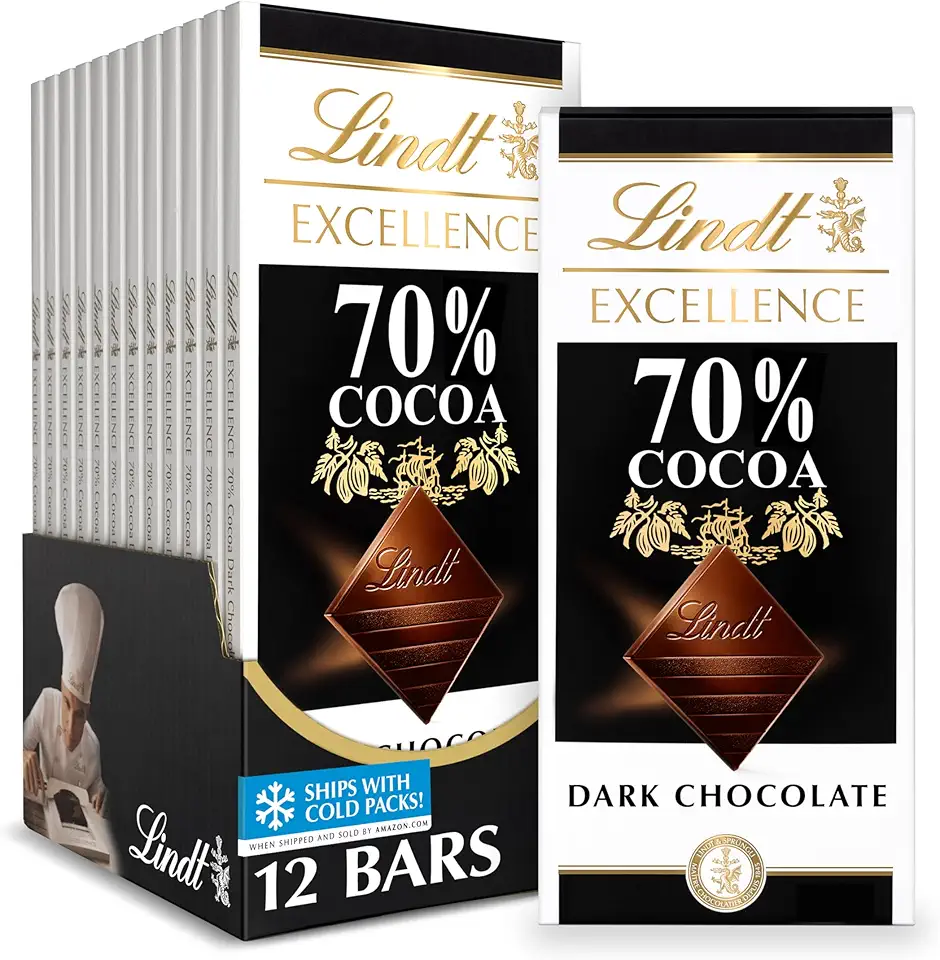 Lindt EXCELLENCE 70% Cocoa Dark Chocolate Bar, Dark Chocolate Candy, 3.5 oz. (12 Pack)
$40.44
View details
Prime
Lindt EXCELLENCE 70% Cocoa Dark Chocolate Bar, Dark Chocolate Candy, 3.5 oz. (12 Pack)
$40.44
View details
Prime
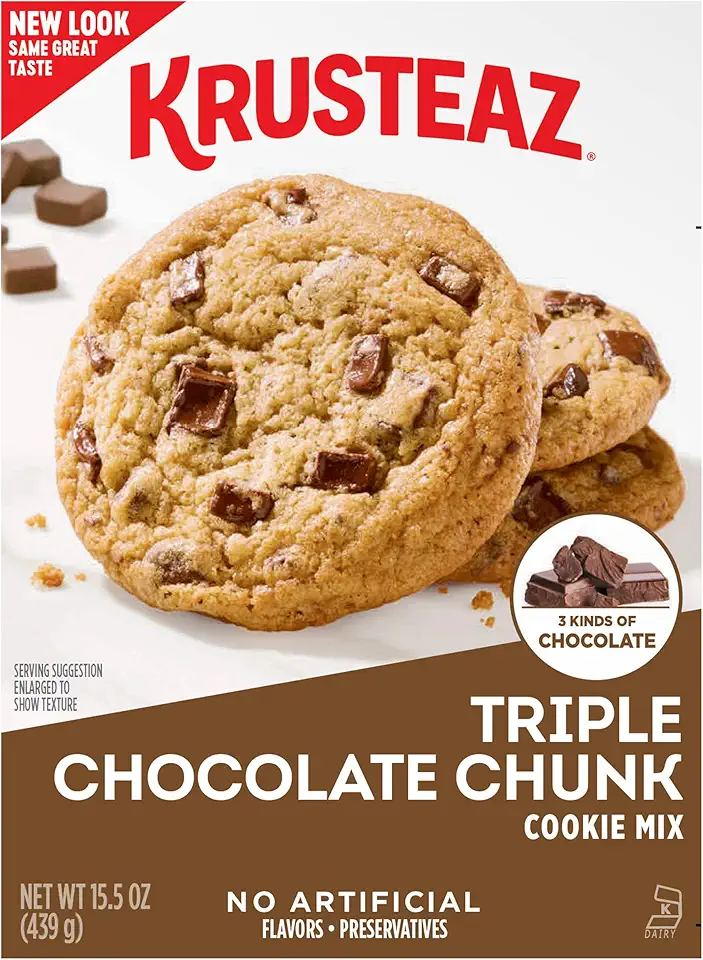 Krusteaz Triple Chocolate Chunk Cookie Mix, Bakery Style, 3 Kinds of Chocolate, 15.5 Oz Boxes (Pack of 12)
$53.95
View details
Krusteaz Triple Chocolate Chunk Cookie Mix, Bakery Style, 3 Kinds of Chocolate, 15.5 Oz Boxes (Pack of 12)
$53.95
View details
Instructions
Step 1
Preheat the oven to 180°C (350°F). In a large mixing bowl, combine *all-purpose flour*, *unsalted butter*, *granulated sugar*, and *egg yolk* until the mixture forms a soft dough.
Knead the dough briefly. Roll it out on a lightly floured surface to a thickness of about 1 centimeter (0.5 inches). Cut out two circles to fit your cake pan. *Place* them on a baking sheet lined with parchment paper.
Bake for 15-20 minutes or until golden brown. Allow to cool completely on a wire rack.
Step 2
Suspend the *gelatin* in *2 tablespoons of water* and allow it to bloom for about 10 minutes. Heat the *milk* until warm, then add the bloomed gelatin and stir until completely dissolved. Set aside.
In a mixing bowl, beat *butter* and *granulated sugar* until light and fluffy. Gradually add the gelatin mixture, followed by the *vanilla extract*. Mix thoroughly.
Divide the souffle mixture between the *shortbread layers*. Let it set in the refrigerator for at least 2 hours to firm up.
Step 3
Melt the *dark chocolate* and *unsalted butter* together over a double boiler or in the microwave, stirring occasionally until smooth.
Once the souffle has set, pour the melted chocolate glaze evenly over the top of the cake. Use a spatula to spread the glaze to the edges. Let it sit for a few minutes at room temperature to set.
Step 4
Once the *chocolate glaze* has set, gently remove the cake from the baking form. Ensure both the *shortbread layers* and *souffle* have well combined by refrigerating the cake for an additional hour.
Serve the cake chilled and enjoy the light, airy texture of the Bird's Milk delight!
Servings
Equipment
Essential for combining ingredients smoothly. Opt for various sizes for different components like the souffle and the glaze.
Crucial for achieving the perfect souffle texture. A stand mixer would make your life easier, but a hand mixer works too.
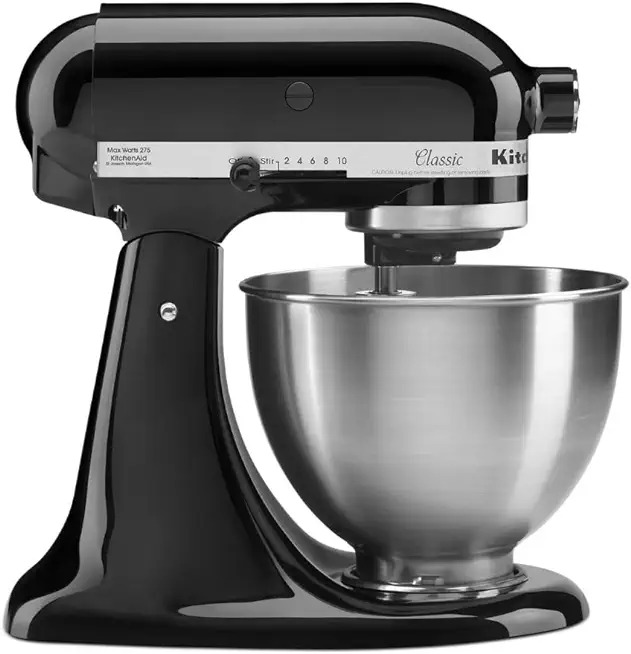 KitchenAid Classic Series 4.5 Quart Tilt-Head Stand Mixer K45SS, Onyx Black
$279.99
$329.99
View details
KitchenAid Classic Series 4.5 Quart Tilt-Head Stand Mixer K45SS, Onyx Black
$279.99
$329.99
View details
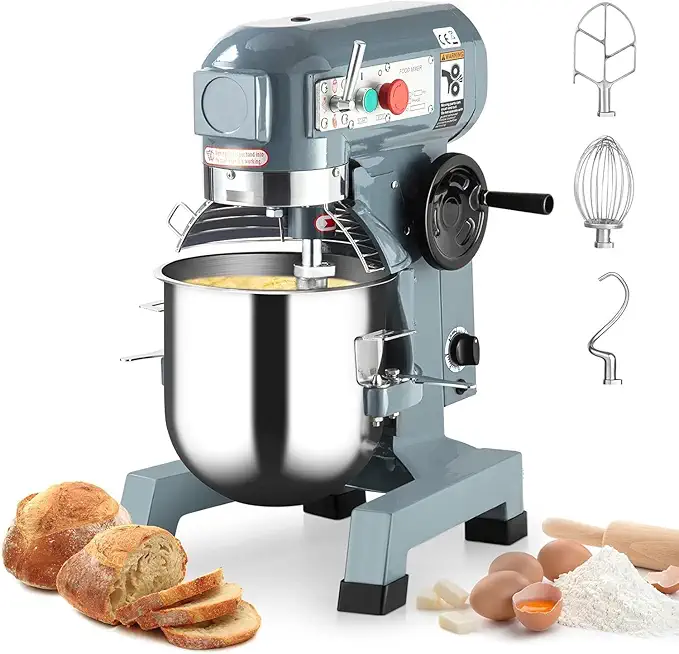 Commercial Stand Mixer, 15Qt Heavy Duty Electric Food Mixer, Commercial Mixer 600W with 3 Speeds Adjustable 130/233/415RPM, Stainless Steel Bowl, Dough Hook Whisk Beater Perfect for Bakery Pizzeria
$579.99
View details
Prime
Commercial Stand Mixer, 15Qt Heavy Duty Electric Food Mixer, Commercial Mixer 600W with 3 Speeds Adjustable 130/233/415RPM, Stainless Steel Bowl, Dough Hook Whisk Beater Perfect for Bakery Pizzeria
$579.99
View details
Prime
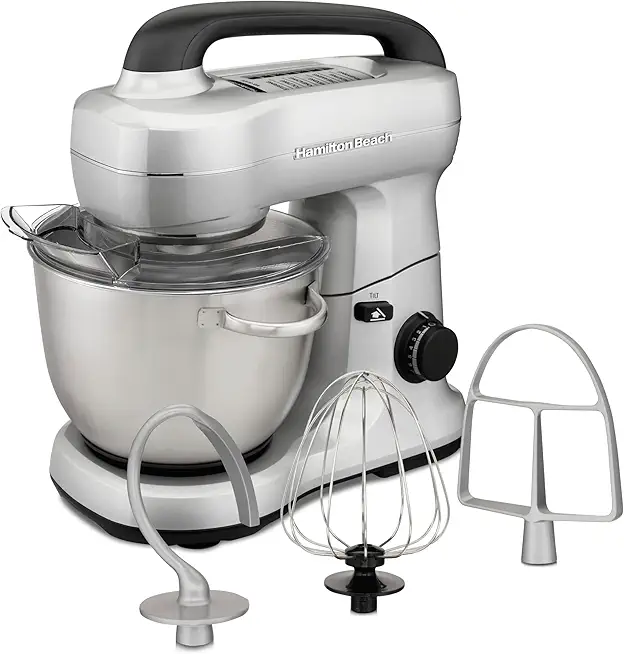 Hamilton Beach Electric Stand Mixer, 4 Quarts, Dough Hook, Flat Beater Attachments, Splash Guard 7 Speeds with Whisk, Silver
$95.99
$119.99
View details
Hamilton Beach Electric Stand Mixer, 4 Quarts, Dough Hook, Flat Beater Attachments, Splash Guard 7 Speeds with Whisk, Silver
$95.99
$119.99
View details
Use a high-quality non-stick pan to help the cake release effortlessly when it's done.
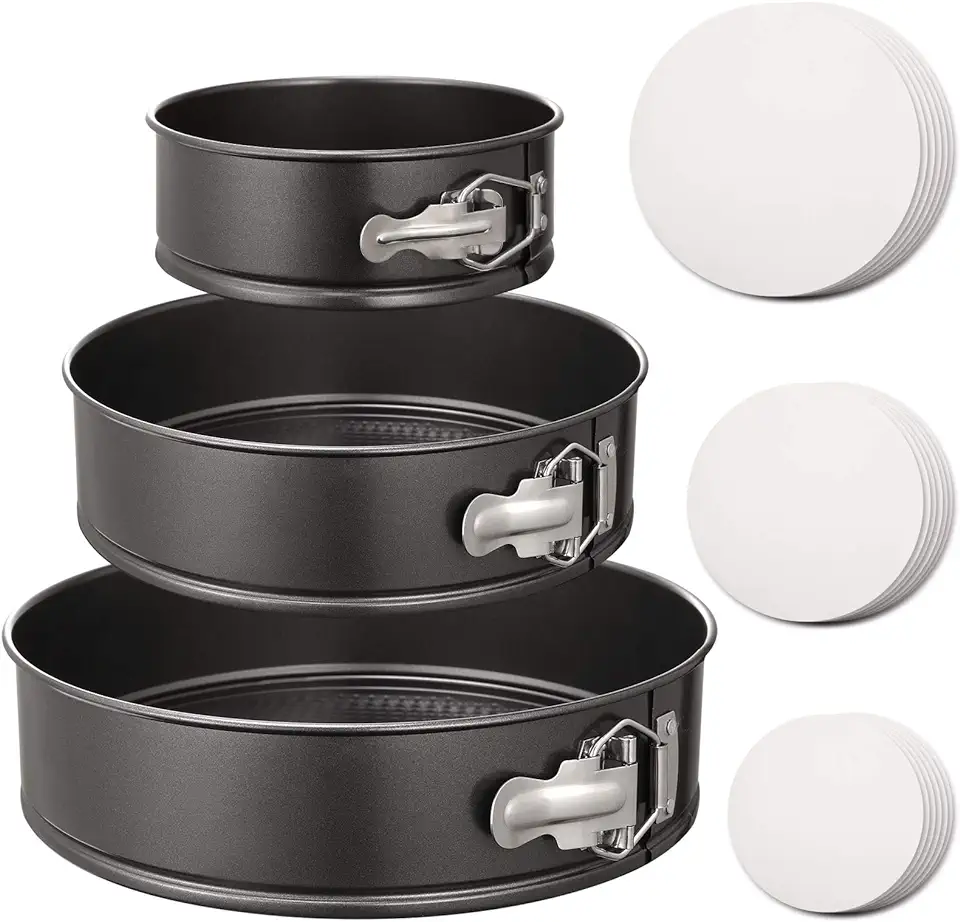 HIWARE Springform Pan Set of 3 Non-stick Cheesecake Pan, Leakproof Round Cake Pan Set Includes 3 Pieces 6" 8" 10" Springform Pans with 150 Pcs Parchment Paper Liners
$23.99
$29.00
View details
Prime
HIWARE Springform Pan Set of 3 Non-stick Cheesecake Pan, Leakproof Round Cake Pan Set Includes 3 Pieces 6" 8" 10" Springform Pans with 150 Pcs Parchment Paper Liners
$23.99
$29.00
View details
Prime
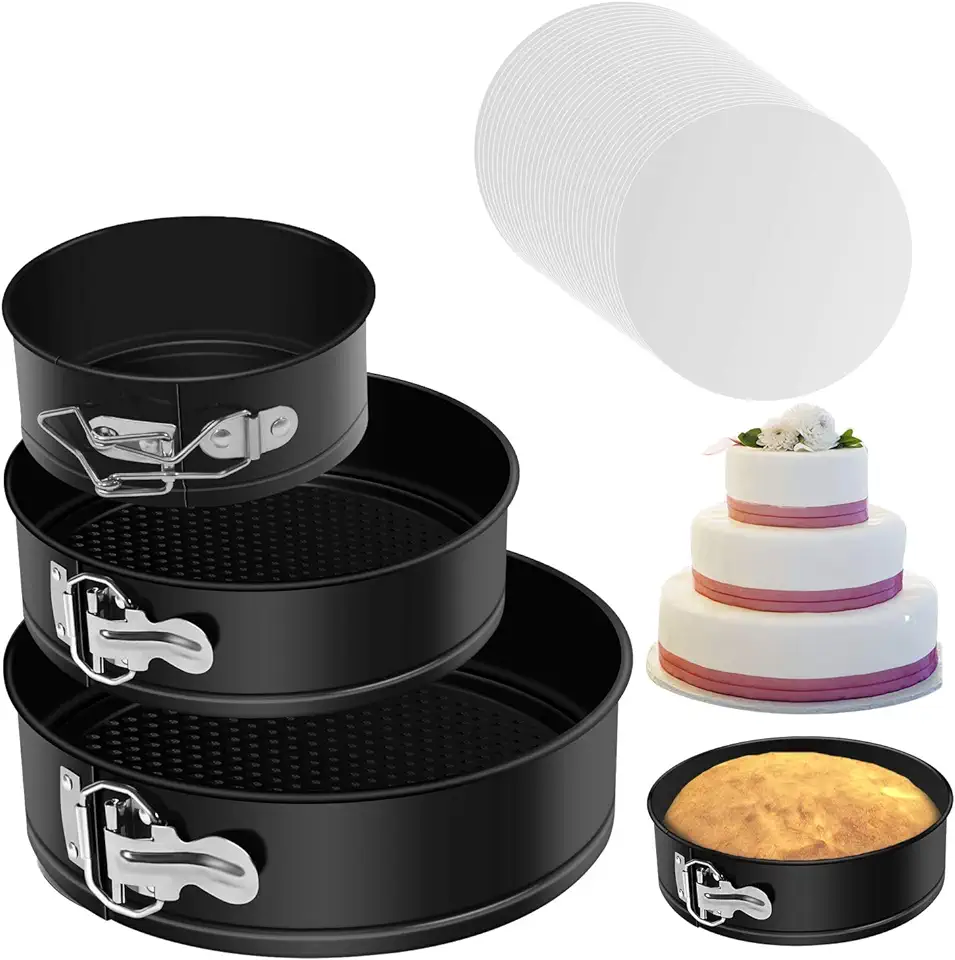 Springform Cake Pan Set of 3 - Nonstick Leakproof Round Cheesecake Pan with Removable Bottom, Circle 3 Tiered 4" 7" 9 inch Spring form Pans for Baking with 50 Pcs Parchment Paper Liners
$18.99
$25.99
View details
Prime
Springform Cake Pan Set of 3 - Nonstick Leakproof Round Cheesecake Pan with Removable Bottom, Circle 3 Tiered 4" 7" 9 inch Spring form Pans for Baking with 50 Pcs Parchment Paper Liners
$18.99
$25.99
View details
Prime
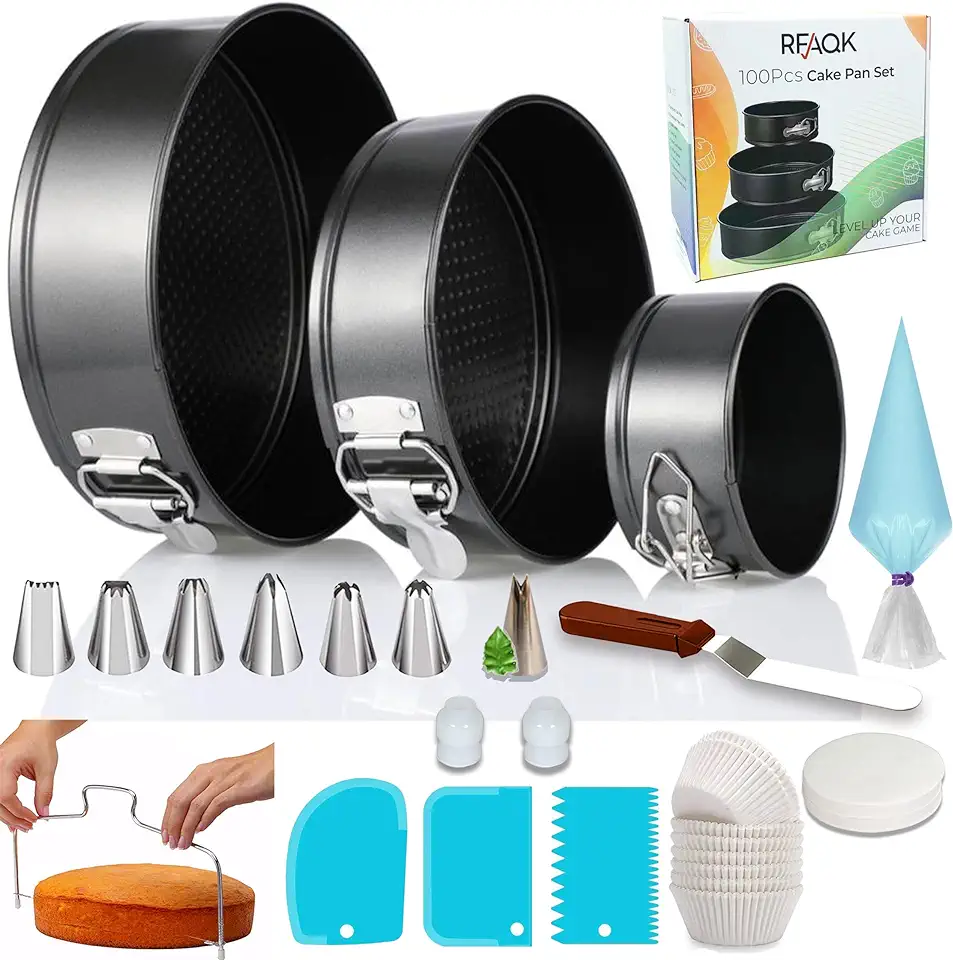 RFAQK 100PCs Cake Pan Sets for Baking + Cake Decorating Kit: 3 Non-Stick Springform Pans Set (4, 7, 9 inches), Piping Tips, Cake Leveler – Multi-functional Leak-Proof CheeseCake Pan & eBook
$23.99
$29.99
View details
RFAQK 100PCs Cake Pan Sets for Baking + Cake Decorating Kit: 3 Non-Stick Springform Pans Set (4, 7, 9 inches), Piping Tips, Cake Leveler – Multi-functional Leak-Proof CheeseCake Pan & eBook
$23.99
$29.99
View details
Ideal for scraping every bit of batter and ensuring smooth layering. Silicone is preferred for heat resistance.
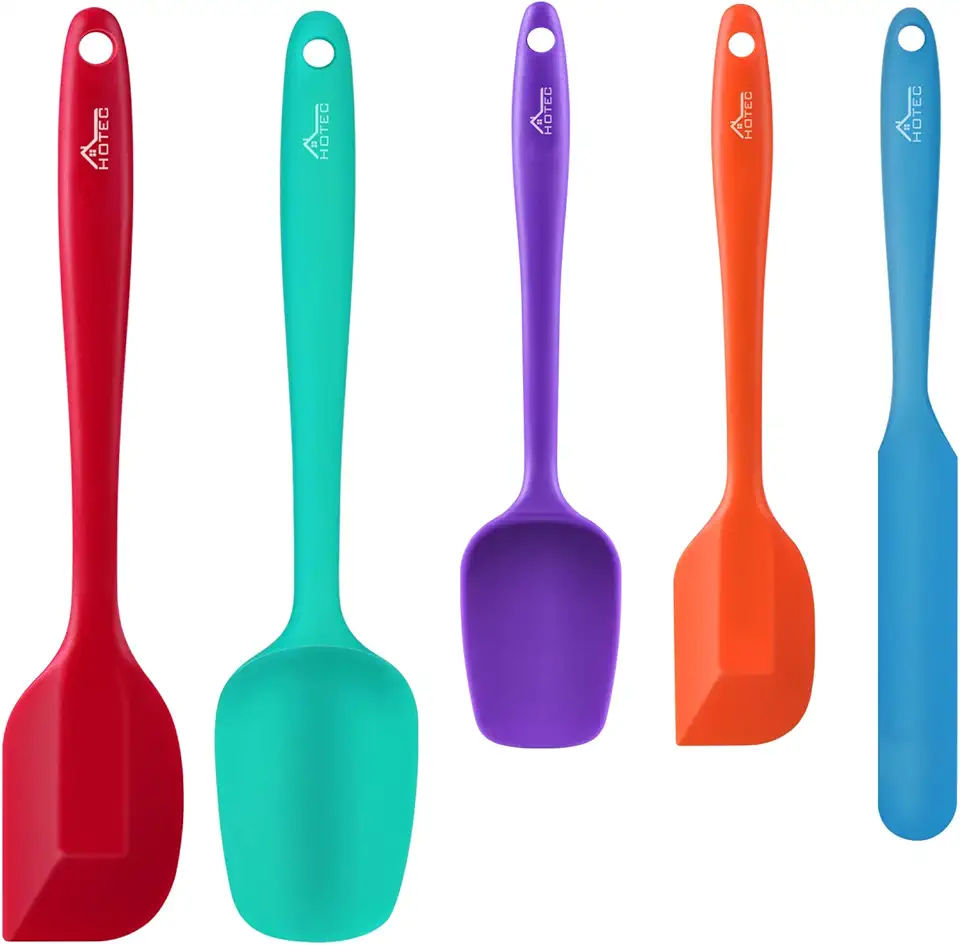 HOTEC Food Grade Silicone Rubber Spatula Set for Baking, Cooking, and Mixing High Heat Resistant Non Stick Dishwasher Safe BPA-Free Multicolor Set of 5
$9.59
$18.99
View details
Prime
HOTEC Food Grade Silicone Rubber Spatula Set for Baking, Cooking, and Mixing High Heat Resistant Non Stick Dishwasher Safe BPA-Free Multicolor Set of 5
$9.59
$18.99
View details
Prime
 Wilton Icing Spatula - 13-Inch Angled Cake Spatula for Smoothing Frosting on Treats or Spreading Filling Between Cake Layers, Steel
$7.98
$8.75
View details
Wilton Icing Spatula - 13-Inch Angled Cake Spatula for Smoothing Frosting on Treats or Spreading Filling Between Cake Layers, Steel
$7.98
$8.75
View details
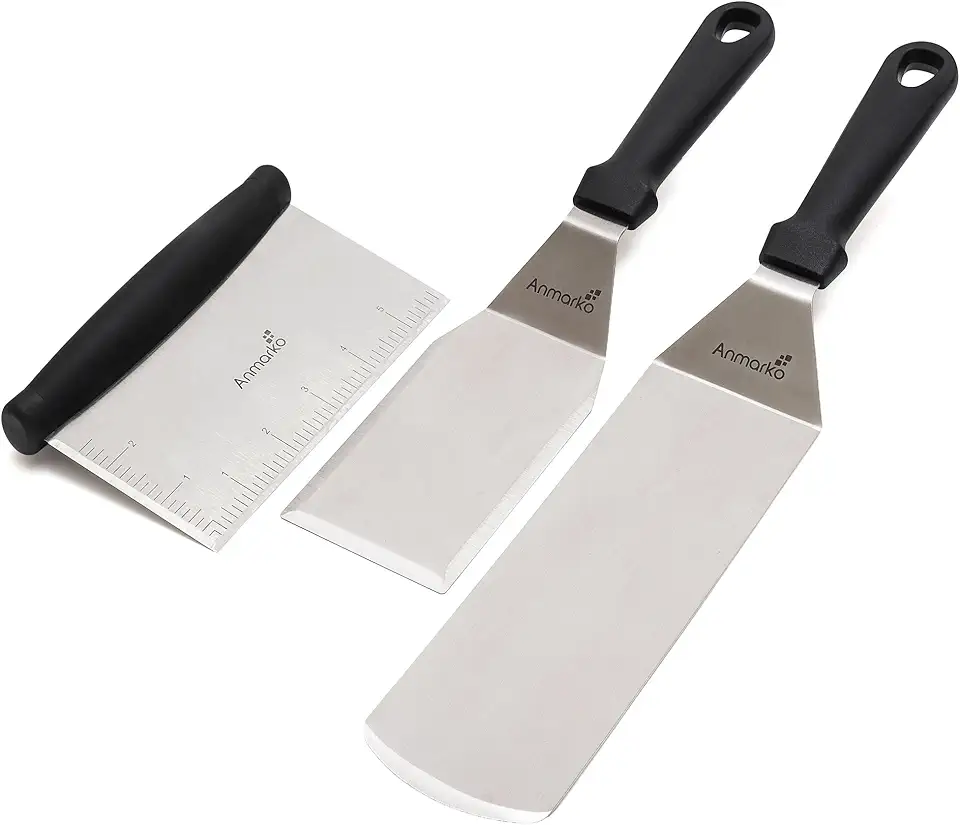 Metal Spatula Stainless Steel and Scraper - Professional Chef Griddle Spatulas Set of 3 - Heavy Duty Accessories Great for Cast Iron BBQ Flat Top Grill Skillet Pan - Commercial Grade
$19.99
$22.99
View details
Metal Spatula Stainless Steel and Scraper - Professional Chef Griddle Spatulas Set of 3 - Heavy Duty Accessories Great for Cast Iron BBQ Flat Top Grill Skillet Pan - Commercial Grade
$19.99
$22.99
View details
Handy for smooth batter and combining dry ingredients. An essential tool for any baker.
 OXO Good Grips 11-Inch Balloon Whisk
$10.93
$11.95
View details
Prime
best seller
OXO Good Grips 11-Inch Balloon Whisk
$10.93
$11.95
View details
Prime
best seller
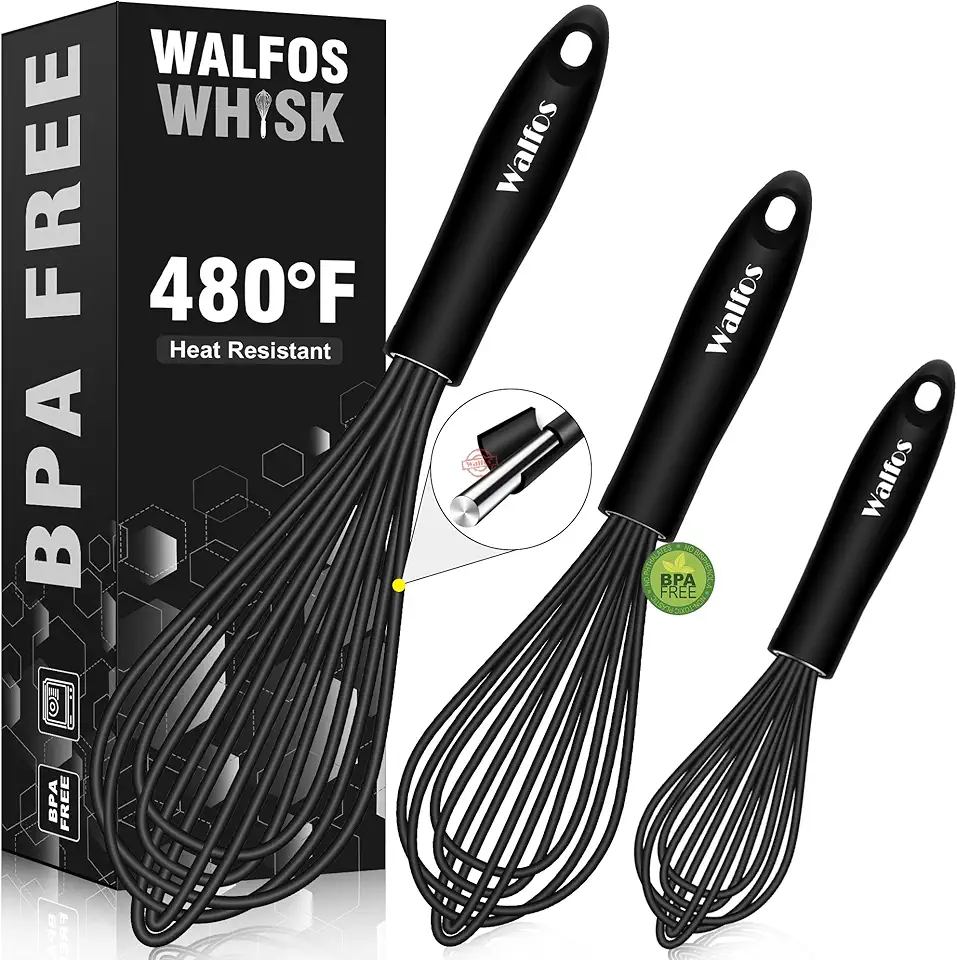 Walfos Silicone Whisk,Stainless Steel Wire Whisk Set of 3 -Heat Resistant 480°F Kitchen Whisks for Non-stick Cookware,Balloon Egg Beater Perfect for Blending,Whisking,Beating,Frothing & Stirring,Black
$11.89
$14.99
View details
Prime
Walfos Silicone Whisk,Stainless Steel Wire Whisk Set of 3 -Heat Resistant 480°F Kitchen Whisks for Non-stick Cookware,Balloon Egg Beater Perfect for Blending,Whisking,Beating,Frothing & Stirring,Black
$11.89
$14.99
View details
Prime
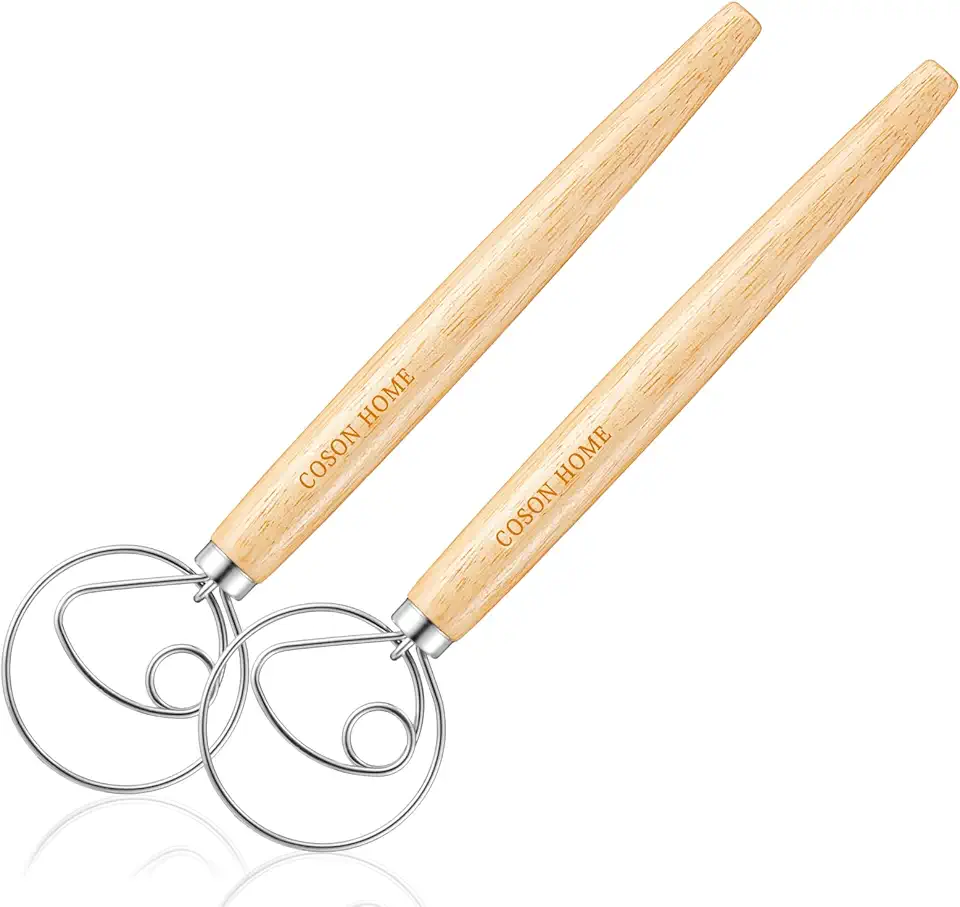 Pack of 2 Danish Dough Whisk Blender Dutch Bread Whisk Hook Wooden Hand Mixer Sourdough Baking Tools for Cake Bread Pizza Pastry Biscuits Tool Stainless Steel Ring 13.5 inches 0.22 lb/pcs…
$9.80
$14.99
View details
Pack of 2 Danish Dough Whisk Blender Dutch Bread Whisk Hook Wooden Hand Mixer Sourdough Baking Tools for Cake Bread Pizza Pastry Biscuits Tool Stainless Steel Ring 13.5 inches 0.22 lb/pcs…
$9.80
$14.99
View details
Variations
Faq
- How do I know when the souffle is set properly?
The souffle should be firm to the touch and not wobble when shaken. It should hold its shape when sliced but still be moist and airy inside.
- What’s the best way to prevent my shortcrust from falling apart?
Ensure your butter is cold when mixing the dough, and allow the crust to cool completely before attempting to remove it from the pan.
- Can I add flavors to the souffle?
Absolutely! For an intermediate twist, try folding in vanilla bean paste or citrus zests, like lemon or orange, to enhance the flavor profile.
- What’s the secret to a glossy chocolate glaze?
Use high-quality chocolate and add a small amount of vegetable oil to the glaze mixture. Stir continuously to keep the texture smooth and shiny.
- How can I ensure an even cake layer?
For experienced bakers, use a cake leveler or a long serrated knife to trim the cake layers evenly before adding the souffle and glaze.
- What’s the best technique for layering the souffle and the cake base?
Pour the souffle over the cooled crust while it's still in the springform pan for neat layers. Gently tap the pan to ensure even distribution and avoid bubbles.

